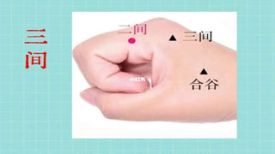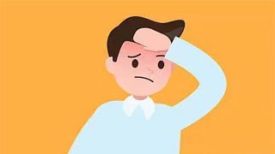In the eyes of traditional Chinese medicine experts, the importance of calf health has long surpassed its own supportive role. The calf is connected to the liver, brain, and heart, but many people do not take it seriously, causing a whole body of illness! It's not too late to see now.
In the eyes of traditional Chinese medicine experts, our calves can even be called the "second heart" of the human body!
Calf=Second Heart
Helping blood flow and delaying aging
The human blood circulation includes arteries and veins. Arterial circulation and cardiac propulsion are the most important;
For veins, the pressure generated by muscle contraction is one of the hemodynamics, and the venous return in the legs mainly relies on the contraction of the calf muscles.
Taking good care of your calves is like adding a pump to the lower part of your body, which can give your heart a helping hand.
This means that the importance of the calves has reached the position of the human body's "second heart". As the saying goes, when a person grows old, their legs grow old first. Only with strength on their legs can they have a longer lifespan. Middle aged and elderly people are a high-risk group for leg diseases, and special attention should be paid to maintaining leg health.
The calf is a "load-bearing wall"
The calf is like a load-bearing wall of the human body, and any movement, including standing and walking, cannot do without the contraction of the calf muscles. It can be said that more than half of a person's activities and energy expenditure in their lifetime rely on their calves. Dai Jingang added that the susceptibility of elderly people to falls is closely related to a decrease in calf function.
The calf is the "transportation hub"
50% of the nerves, blood vessels, and blood in the human body are in the legs. There are more than 60 acupoints distributed on the calf, and the six important meridians of Foot San Yang Meridian and Foot San Yin Meridian also pass through the calf, which are important transportation arteries for the human body and maintain the upward and downward movement of Qi and blood.
The calf is a "health center"
The calf plays an important role in health preservation, disease prevention and treatment. On the one hand, there are many meridians and acupoints in the calf, so regularly massaging the calf is like massaging the five organs and six viscera; On the other hand, the calf can be taken medicine like a "mouth" because the skin behind the middle ear and back of the body is thinnest, and the calf ranks third. However, it has a larger area and more blood vessels, making it more suitable for soaking in a medicinal bath.
Nowadays, foot massage shops are all over the streets, but the thickness of the calf skin is only 1/5 of the sole of the foot, and the area and number of blood vessels are 4-6 times that of the foot. Leg massage is actually more effective than foot massage.
The calf is a "disease reflection area"
Many diseases can be reflected in the lower leg, such as cramps in the lower leg, which may be related to calcium deficiency, swelling indicating organ disease, and cooling indicating constitution deficiency and cold. Timely detection of symptoms is beneficial for early prevention and treatment of diseases.
Many leg injury habits affect the heart, brain, and liver
The calves are so important, but many people don't know how to cherish them and let bad habits harm their health.
1. Long sitting and standing
When sitting, most of the muscles in the human body, including the calf muscles, are in a relaxed state except for the waist muscles. However, prolonged relaxation is not good because muscles need to constantly contract to maintain elasticity and resilience.
Surgeons, police officers, security guards, and other people who have been standing for a long time, their calf muscles are in a tense state for a long time, which is also unhealthy.
Wearing high heels
Heel tendons are ligaments that connect the bones at the heel to the calf muscles. When you press your toes, the heel muscles will become tense. If you step on high heels, the heel muscles will remain tense and become less relaxed over time.
When you wear flat shoes again, you will feel that the muscles in your calves are stretched very uncomfortable, and the shape will naturally not look good, because your heel muscles are shortened. The higher the heel, the stronger the tension it brings to the Achilles tendon.
3. Getting cold and catching a cold
Cold air entering the calves is not conducive to blood circulation and may even trigger osteoarthritis over time. Dai Jingang stated that clinically common "upper heat and lower cold" patients are prone to sweating and fever above the waist, and fatigue and cold pain below the waist, which is related to people's lack of attention to leg warmth.
4 cross legged
When crossing legs, the knee that is being pressed by the cushion is compressed, which can easily affect the blood circulation in the lower limbs, induce varicose veins in the legs, and even thrombosis. Patients with hypertension, diabetes and heart disease should pay special attention.
5 Excessive exercise
Letting muscles idle is not good, nor is excessive exercise. Traditional Chinese medicine says that prolonged walking can cause muscle damage. Muscles and muscles exist at the junction of the calf and feet, playing an important role in lifting and walking. Proper exercise is beneficial for the strength of the tendons and fascia in the limbs, but long-distance travel, excessive force, and exceeding the expected load can cause muscle strain and muscle injury. Severe cases may lead to sudden death.
Wearing tight pants
Tight pants and shapefitting stockings may hinder blood circulation in the calves and even cause varicose veins in the lower limbs, resulting in visible spider like capillaries and even worm like venous protrusions in the calf skin.
Traditional Chinese medicine experts have unique techniques for protecting the calves
Three steps to reduce calf age
Young legs make a man not old!
The health of the calves is so important that it is never too late to take care of them, especially after the age of 40 when various parts of the body's functions decline and accelerate. It is even more important to pay attention to protecting the calves. Exercise muscles and enhance venous contraction ability.
1 "Seven bumps and a hundred illnesses behind the scenes disappear"
"Seven bumps and one hundred diseases dispelling behind the back" is a type of exercise in Fitness Qigong Eight Section Jinli, which can effectively exercise the calf muscles and relieve heel pain.
Ding Liling, Deputy Researcher at the Fitness Qigong Management Center of the General Administration of Sport of China, stated that foot bouncing can develop the strength of the posterior calf muscles, elongate the plantar muscles and ligaments, and improve balance ability.
Walking and leg training are the simplest
Walking is the simplest way to practice legs. The American Sports Medicine Association also recommends that walking is a better exercise to enhance leg strength. Exercising leg strength can effectively prevent falls.
Method:
Persist for 30 minutes every day, preferably 5 times a week or more, and gradually increase your pace.
3 leg swings: prevent lower limb atrophy and weakness
Leg swinging can promote blood circulation, relax muscles, prevent hemiplegia, lower limb atrophy and weakness, leg numbness, calf cramps, etc.
Method:
Put your hands on your hips, first swing your calves forward to lift your toes upwards, then swing them backwards to force your toes backwards, keeping your feet straight and your legs as straight as possible. When swinging your legs, keep your upper body upright and swing your legs dozens of times each.
Rubbing the leg stomach: enhancing leg strength
Rubbing the belly of the legs can enhance leg strength.
Method:
Clamp one side of the calf tightly with both palms, rotate and rub it, rubbing each side about 20 times, and then rub the other leg in the same way.
5 Daily foot soaking: taking medicine with legs
Experts suggest that everyone develop the habit of soaking their feet every day. The calf can be taken medicine like a "mouth" because its skin is thin, large, and has many blood vessels, making it more suitable for soaking in a medicinal bath.
The thickness of the calf skin is only 1/5 of the sole of the foot, while the area and number of blood vessels are 4-6 times that of the foot. Leg therapy is actually more effective than foot therapy.
Method:
Choose a deeper basin, with water soaking 2/3 of the calves;
The water temperature should be between 40 ℃ and 45 ℃, and the time should not exceed half an hour.
After soaking your feet, gently massage the acupoints for better results, and pay attention to keeping your feet warm.
Using the five methods above and persistently doing it every day can keep your calves healthy and young, which can lead to a longer lifespan and fewer illnesses and pains! The calves are the second heart, and taking care of them should start from now on. Tell your friends quickly!
Kind reminder: The information is for reference and learning only, and should not be used as a basis for medical diagnosis. If necessary, please use under the guidance of a physician.
The calf is connected to the liver, brain, and heart, but many people do not take it seriously, causing a whole body of illness! Be sure to take a look
Release time:2024-06-16 16:57:58
Reading:208
Word Count:9247
Subscribe to email


